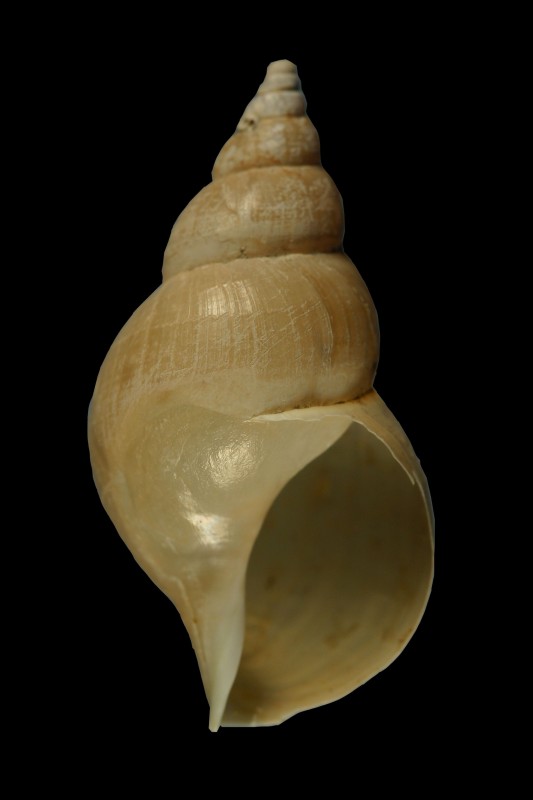A parametric shell surface
A parametric equation with two parameters can describe a surface in three-dimensional space. We demonstrated this idea in the article on drawing a torus. In that article a torus is regarded as a sequence of circles that revolve around the Z-axis.
In this article we consider a sequence of ellipses, and we add a few twists and turns to discover a parametric equation for the surface of a seashell.
The ellipse in 3-D space #
Fig 1: Anatomy of an ellipse
CC BY SA-40 Ag2gaeh
We start with the definition of an ellipse[1] in space. Some properties of an ellipse is shown in fig. 1.
We start with ellipse that is centered at the origin with a semi-major axis on the XY-plane. We use the Z-axis as the semi-minor axis and take the length of the semi-minor axis as is some value .
Using these definitions we end up with a parametric equation for an ellipse .
Where
- is the angular parameter that sweeps through one revolution
Spiralling downward and outward #
In previous articles we came to appreciate the role of spirals when it comes to seashells. In particular, we discovered an underlying equation for spiralling growth observations .
Where
- is the initial value
- is the growth factor
- is the rotation angle
As shown in a before, we already have a parametric equation for the curve of a shell spiral. Using that equation, we end up a wire spiral in space. Something that looks like the curve in fig. 2.

Fig 2: Wire spiral in 3-D
In order to make a shell surface, we add another parameter. We use this parameter to trace out an ellipse at every point of the wire spiral. This ellipse has a semi-major axis, , that starts on the Y axis and connects to the spiral (i.e. the wire in fig. 2). Note that is perpendicular to the Y-axis.
Equations with variations #
We do not use exactly the same equations as before for the spiral because the new curve traces along the middle (the widest) part of the worl. Also, we use the radius, and not the full width of the shell. So, the new spiral the function is
Where
- is the initial radius
- is the growth in the radius of the widest part of a worl.
- is the angle of rotation through worls.
We now use this result obtain a function for , .
The function for the height is also not the same as before. Here, we measure the height to the middle of each worl, not the total height.

Fig 3: A photo of a seashell
Steve Wilkinson - Conchological Society
Where
- is the initial height
- is the growth in the height to the middle of each worl.
- is the angle of rotation through worls.
We are not yet done, to complete the picture, we need one more value. That is the height of the semi-minor axis of the ellipse. As we see in fig. 3 this value cannot be measured directly. Nonetheless, for our current purposes, let's assume we have the measurements. Our function for the worl thickness is is
Where
- is the initial radius of the worl height
- is the growth in the radius of worl height measured at the inner axis
- is the angle of rotation through worls.
Putting it all together #
This final trick is to combine eq. 1 with the functions we just defined. We sweep down the Y-axis with , then move to the point where we sweep out the ellipse. To sweep out the ellipse we use a second parameter . Looking at the last worl in fig. 3 we see that we are not interested in the entire ellipse, just a section of it.
This means we get the following equation for a shell surface :
Where
- is the angle of rotation through worls.
- sweeps the edge of the ellipse.

Fig 3: A mathematical shell surface
If you expand this equation, the resulting algebraic expressions are not simple. But we do not have to do that because we have enough mathematics to render the shell. Fig. 4 shows such a rendition. It has been mirrored on the XZ-plane to have the same orientation as the photo shown in fig. 3.
The Asymptote[2] source code for this rendition can be seen here.
Conclusion #
We started out with the equation for an ellipse in 3-D space, and used the ideas developed in previous articles to develop a new equation for the surface of a shell. The resulting maths a little abstract, but it is enough to render a very recognisable seashell surface. We have not used much more than high-school trigonometry to get here.
References #
- Next: A tunnelling shell surface
- Previous: Torus in Asymptote